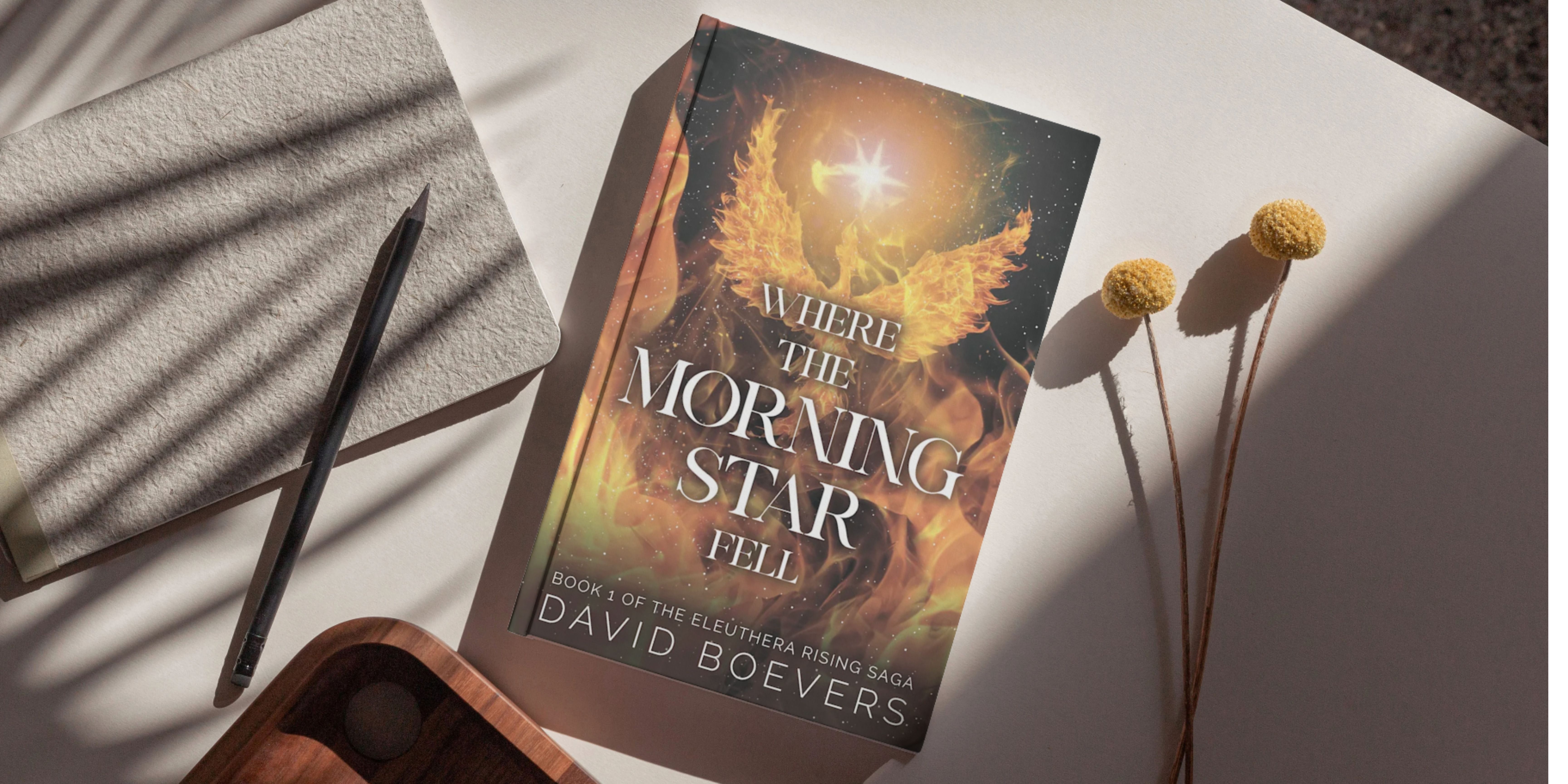Hero or Hitchhiker? The Protagonist Problem

Think of the characters who lit something up in you. The ones who made you cry at midnight, grin in public, or stay up far too late just to see what they’d do next. The ones who turned a good story into something that felt like a memory.
Were they bold and chaotic, delightfully witty, or heartbreakingly quiet? Maybe they were morally gray in a way that felt too familiar. Maybe they were everything you’re not, or everything you wish you were. Playful, flippant, introspective, impulsive.
Whatever their shape, something about them clicked.
But there’s one thing they all had in common. They didn’t just exist in the story. They moved it. They made choices. Took risks. Changed things. That’s the difference between a character who lingers and one who disappears. It’s not about being likable. It’s about having agency.
What Does It Mean for a Character to Have Agency?
Agency is a character’s ability to make decisions that affect the story’s direction. It’s the difference between watching a story unfold and shaping it. A protagonist with agency acts. A protagonist without it reacts.
That doesn’t mean they’re always in control. In fact, the most compelling protagonists are often not in control, but they still fight, choose, resist, or chase something. Even failure can be active if the character’s trying.
Even reactive behavior can reflect strong agency — if the reaction is a conscious choice. A protagonist who decides to stay silent, endure, or walk away is still making a decision with consequences. It’s the difference between being swept along and choosing where to drift.
Agency Looks Like:
- Making a difficult decision and dealing with the fallout
- Choosing between two bad options
- Pursuing a goal (even if it changes later)
- Asking hard questions, even when they lead to the wrong answers
Agency Doesn’t Look Like:
- Being dragged along by plot convenience
- Only responding to other characters’ needs
- Letting the story happen to them without resistance
- Waiting for permission to act
How to Write a Protagonist Who Drives the Story
A character with agency isn’t defined by what they are, but by what they do. Here’s how to bring that to life on the page:
1. Give Them a Clear Desire
Whether it’s saving a kingdom, uncovering a secret, or just making it through the day without falling apart, your protagonist should want something. It doesn’t have to be epic. It just has to matter deeply to them.
For example, in Harry Potter and the Sorcerer’s Stone, Harry’s longing to belong drives everything, from embracing Hogwarts to risking his life for his friends.
2. Put Them in Tough Situations
Characters grow when they’re forced to choose. Even if they get it wrong. Especially when they get it wrong. Tension comes from watching someone wrestle with consequences.
And sometimes, what they want is in direct conflict with what they’re allowed to do. Cultural pressure, trauma, or impossible stakes can create powerful tension between internal desire and external constraint, especially when the character finds ways to push back.
In Pride and Prejudice, Elizabeth Bennet must choose between marrying for security or staying true to her principles in a society that punishes independence.
Let Them Fail Forward
A protagonist with agency isn’t flawless. They’ll make mistakes. They’ll choose wrong. But their failures will create new momentum. That’s what keeps the story alive.
In The Lord of the Rings, Frodo ultimately fails to destroy the Ring, but his vulnerability and persistence allow others to finish what he began.
Tie Action to Emotion
Your character’s choices should come from somewhere real: fear, guilt, rage, hope. When we understand the emotional root of a decision, even a small moment can carry enormous weight.
Not all momentum comes from big moves. Some of the most pivotal moments happen inside, when a character chooses to forgive, confess, or stop running. Internal shifts can drive the story just as powerfully as external actions.
In The Color Purple, Celie’s quiet acts of resistance grow from buried pain and emerging self-worth, gradually reshaping her world.
Example: The Hunger Games by Suzanne Collins
Katniss Everdeen is an excellent example of a protagonist with rich agency:
- She volunteers in place of her sister—an unmistakable choice.
- Even when trapped in the Games, she chooses how to survive, who to trust, and when to resist.
- Her smallest gestures, like burying Rue or refusing to kill Peeta, become acts of rebellion that shift the narrative and world around her.
Despite being in a system designed to strip her of control, Katniss constantly finds ways to assert her values. Her agency is what transforms her from tribute to symbol.
What Happens When a Protagonist Has No Agency?
Even beautifully written characters can fall flat if they’re too passive. If you’re worried your main character isn’t working, ask yourself:
- Are they reacting more than acting?
- Are side characters driving the story instead?
- Does the plot still happen without them?
- Has it been several chapters since they made a meaningful choice?
If you answered “yes” to any of these, your protagonist might be riding shotgun in their own story.
But that doesn’t mean you need to start over. Sometimes all it takes is one well-placed decision to bring them back into the driver’s seat.
A useful test: If you removed your protagonist from the story, would the plot unfold the same way?
If so, their choices might not be doing enough to shape the narrative. The fix might be as simple as giving them one moment where their decision changes everything.
Why Character Agency Matters in Storytelling
Readers don’t fall in love with plot points. They fall in love with characters who feel real. And real people want things. They act on impulse, they hesitate, they mess things up. But they move. And that movement is what makes us care.
When your protagonist drives the narrative and starts making decisions that carry weight, the story transforms. It becomes more than a series of events. It becomes a journey worth following.
Make Sure Your Protagonist Has a Say in Their Own Story
If you're deep in revisions and wondering, "Is my protagonist actually doing anything?" you're not alone. It’s a common trap, and one Story Stream is built to help you solve.
Our Protagonist Analysis feature breaks down where your main character takes action, where they fade into the background, and how to build stronger cause-and-effect throughout their arc. You’ll get clear, specific guidance that helps you write a protagonist with momentum that is more than just a name on the page.
Explore all our story-deepening tools at Story Stream and start turning characters into catalysts.
More from the Blog

Interview with David Boevers, Author of Where the Morning Star Fell
Sci-fi author and educator David Boevers shares how Story Stream helps him revise with precision, purpose, and limited writing time. Discover his process, his Eleuthera universe, and how the Chapter Analyzer keeps his revisions on track.

7 Myths About First Drafts That Are Holding You Back
Let go of perfectionism and embrace the messy truth of first drafts. Discover the 7 common myths that keep writers stuck—and the truths that set you free to create boldly, imperfectly, and authentically.

Meet Jessica James: A Story Stream Success Story
Award-winning author Jessica James shares how Story Stream helped her deepen a dual-era historical mystery, uncover fresh ideas, and return to her creative rhythm.

Tension to Twist: Writing Thrillers That Stay With Readers
Build suspense that lingers after the last page with tension, atmosphere, and grounded stakes your readers can feel.

The Shadow That Shapes the Light: Writing Unforgettable Villains
From archetypes to emotional stakes, explore how to craft villains who pressure protagonists, deepen theme, and keep readers turning pages.

From Meet-Cutes to Magic: Crafting HEAs That Truly Land
A practical guide to crafting romance that earns its HEA, balancing authentic chemistry, meaningful conflict, and a satisfying payoff—plus how Story Stream helps you get there.